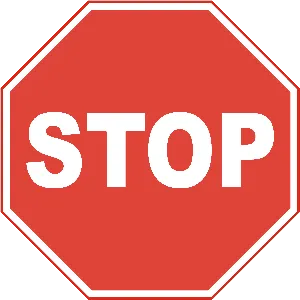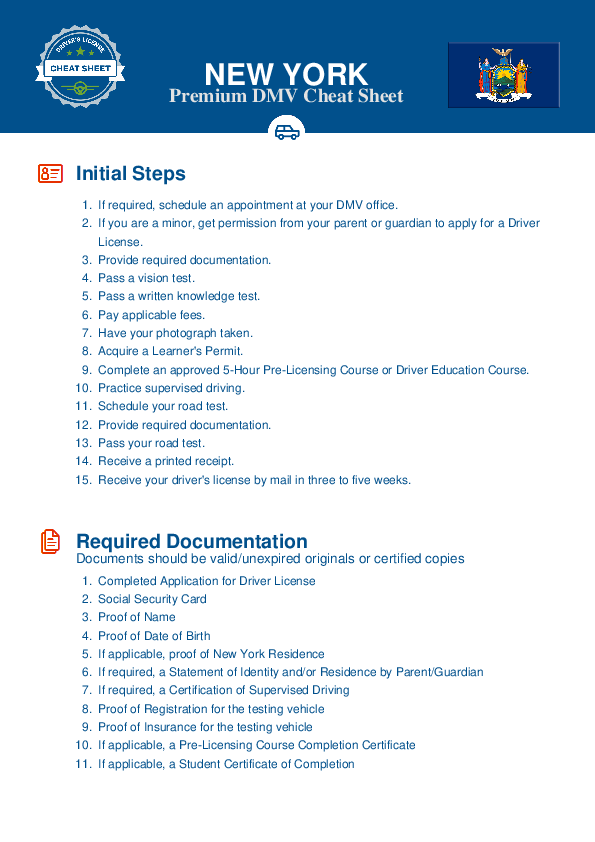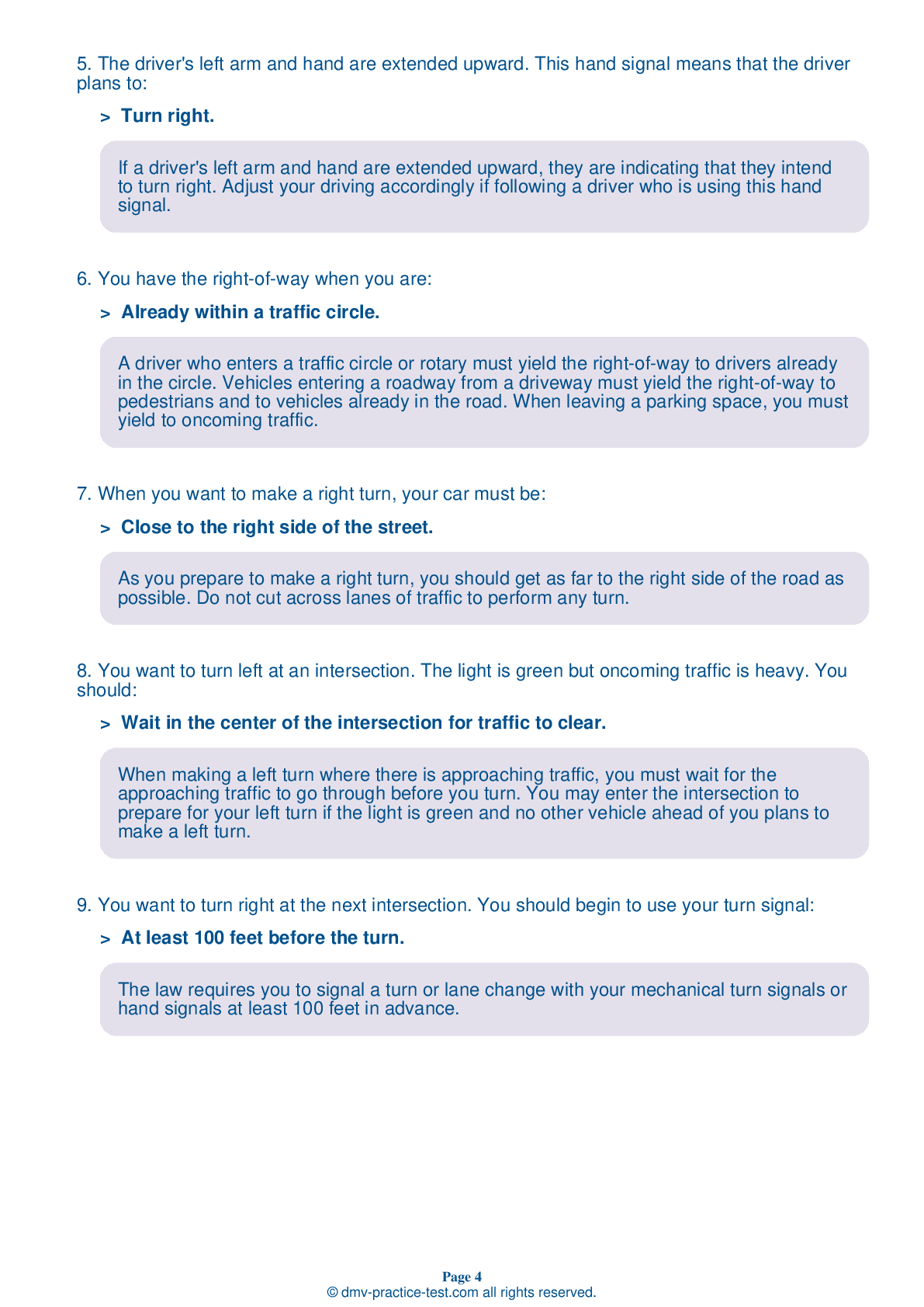FREE New York DMV Practice Test #17 Page 3 of 3
New York's DMV practise examinations have been revised for January 2025. It includes questions based on the New York Driver Handbook's most significant traffic signals and legislation for 2025. Use actual questions that are very similar (often identical!) to the DMV driving permit test and driver's licence exam to study for the DMV driving permit test and driver's licence exam.
On the practise exam, each question gets a tip and explanation to help you remember the concepts. The written component of the official New York DMV test will feature questions about traffic rules, traffic signs, and driving statutes, as well as knowledge from the Driver Handbook.
To obtain a passing grade, you must correctly answer 14 of the 20 questions. Take this practise test from the New York Department of Motor Vehicles to help you prepare for your instruction permit or driver's licence.
The DMV exam is available in several languages.
Using any kind of testing assistance will result in an automatic fail, and the DMV may take additional action against your driver's licence, so stay away from it.
15 . When you are in a line of traffic that is crossing a railroad track that has no signals or gates:
If you are following another vehicle at a railroad crossing, check to make sure you have enough room to get all the way across before you drive onto the tracks. You should never try to pass another vehicle as you approach or cross a railroad crossing. Always check for trains before crossing any railroad tracks.
16 . You may cross double solid yellow lines:
Double solid lines indicate that you may not pass or change lanes. You cannot cross the lines unless it is to turn left to enter or exit a highway, to turn into or from a driveway, or to make a U-turn (where permitted).
17 . When braking on slippery surfaces, you should apply the brakes:
When braking on slippery surfaces, such as roads covered in snow or ice, you should apply your brakes steadily and slowly to avoid locking your brakes. Apply the brakes earlier than you would on a different surface to allow your vehicle extra time to safely slow down.
18 . A solid white line on the right edge of the highway slants in to the left. That shows that:
A solid line along the side of the road indicates where its edge is, marking the boundary between the travel lane and the shoulder. If the edge line angles toward the center of the road, this means that the road is narrower ahead.
19 . What does this road sign mean?

A stop sign means that you must come to a full stop and yield the right-of-way to vehicles and pedestrians in or heading toward the intersection. Go again when it is safe.
20 . A “No stopping” sign means that, unless directed to do so by a police officer, you may stop only:
A "No stopping" sign means you can only stop to obey a traffic signal, to obey a police officer, or to prevent a conflict with another vehicle.
Need Car Insurance? No problem!
Compare the best rates in New York and find a personalized policy that meets your needs.
1. Are You Currently insured ?
2. Married ?
3. Do you own your Home?
4. Do you have more than 1 car ?
5. Have you or a Family Member Honorably Served in U.S. Military ?
6. Your Name
7. Age
8. Zip code
IMPORTANT REMINDER:Auto Insurance is Mandatory to drive in New York. Get covered before you hit the road to avoid any fines.
Ranked by best match



